|
Date
|
Speaker
|
Topic
|
Faculty Host
|
12/4/2015
365A MH
10:30-12:00
|
Gal Zauberman
Yale
|
Does Taking Photos Get in the Way? The Effect of Photo-taking on the Enjoyment of Experiences
-
Click to read Abstract
Experiences are vital to the lives and well-being of people hence, understanding the factors that amplify or dampen enjoyment of experiences is important. One such factor is photo-taking, which has become ubiquitous and an integral part of people's experiences. Prior research has not examined the effects of photo-taking on enjoyment of experiences but has identified relevant processes. These processes suggest that taking photos could either enhance or degrade experiences, depending on whether photo-taking will increase or decrease engagement with the experience. Across both field and lab experiments, we find that taking photos improves evaluations of positive experiences, both immediately following the experience as well as after a delay, which is due to photo-taking enhancing engagement in the experience. However, these benefits only occur when capturing an experience in photos does not overly interfere with the experience itself. In addition, for negative experiences, the enhanced engagement due to photo-taking results in worse evaluations of the experience.
|
|
11/20/2015
365A MH
10:30-12:00
|
Nidhi Agrawal
U of Washington
|
Emotions and Health Decisions
-
Click to read Abstract
I will present a series of studies that help us understand how specific emotions, in particular self-conscious emotions such as guilt and shame, affect decision-making. I use contexts such as public health messages and binge drinking, to shed light on the way emotions systematically influence our judgments and behavior. We find that negative emotions defend against overloading of the same negative emotion, prefer information framed in a way that is consistent with the emotion, shape whether we construe information at higher or lower levels, and determine how open we are to changing our opinions.
|
|
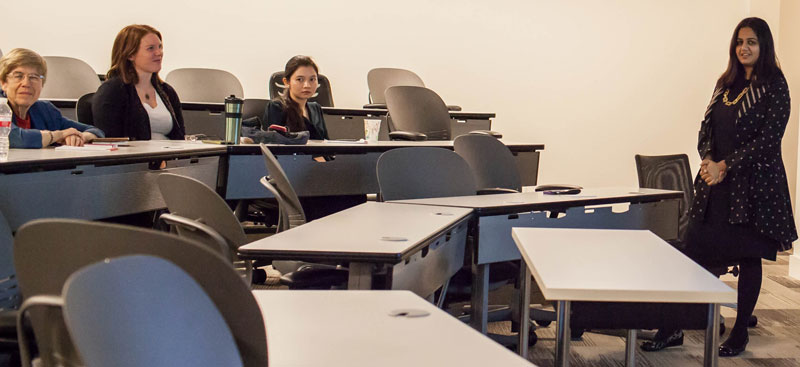
|
11/13/2015
365A MH
10:30-12:00
|
Mingyu Joo
Ohio State
|
Temporal Distance and Price Elasticity
-
Click to read Abstract
Conventional wisdom holds that, in industries with advance sales and perishable capacity, demand becomes less price-elastic as the advance sales period proceeds. However, this conventional wisdom is based solely on evidence from the airline industry, and is commonly motivated by air travel’s traditional consumer segmentation. We investigate a large dataset from the cruise industry and estimate the responsiveness of demand to price using a flexible choice model. Unlike airlines, cruise demand becomes more price elastic as the advance sales period proceeds. The price elasticity of cruise demand increases (in absolute value) from –0.5 twenty weeks prior to cruise departure to –1.4 in the final week of ticket availability. Further analyses suggest that this change in price elasticity comes from different groups of consumers entering the market at points in the time. Consequently, we suggest that the airline-based conventional wisdom should not be applied to all industries that use advance sales, especially those with hedonic benefits.
|
|

|
11/6/2015
365A MH
10:30-12:00
|
Mike Norton
Harvard
|
How Much (More) Should CEOs Make? A Universal Desire for More Equal Pay
-
Click to read Abstract
Do people from different countries and different backgrounds have similar preferences for how much more the rich should earn than the poor? Using survey data from 40 countries (N = 55,238), we compare respondents' estimates of the wages of people in different occupations — chief executive officers, cabinet ministers, and unskilled workers — to their ideals for what those wages should be. We show that ideal pay gaps between skilled and unskilled workers are significantly smaller than estimated pay gaps and that there is consensus across countries, socioeconomic status, and political beliefs. Moreover, data from 16 countries reveals that people dramatically underestimate actual pay inequality. In the United States — where underestimation was particularly pronounced — the actual pay ratio of CEOs to unskilled workers (354:1) far exceeded the estimated ratio (30:1), which in turn far exceeded the ideal ratio (7:1). In sum, respondents underestimate actual pay gaps, and their ideal pay gaps are even further from reality than those underestimates.
|
|
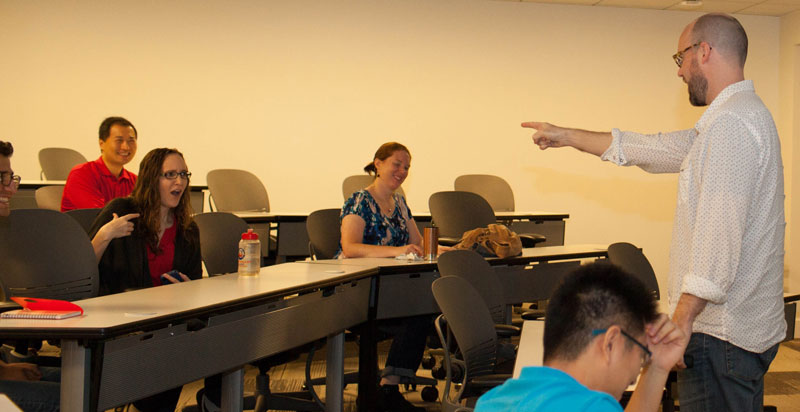
|
10/23/2015
365A MH
10:30-12:00
|
Keisha Cutright
Wharton
|
How Reminders of God Dampen the Effectiveness of Fear Appeals
-
Click to read Abstract
The current research focuses on understanding how reminders of God might affect consumer compliance with fear-based advertising. Results across six studies demonstrate that when the concept of God is salient, consumer compliance and persuasion in response to fear appeals is dampened. Importantly, the results suggest that one reason for this persuasion-dampening effect of God salience is the fact that consumers associate the concept of God with the idea of support, which then leads them to feel more capable of coping with the consequences of noncompliance.
|
|

|
10/16/2015
365A MH
10:30-12:00
|
Oliver Rutz
U of Washington
|
A New Method to Aid Copy Testing of Paid Search Text Advertisements
|
|
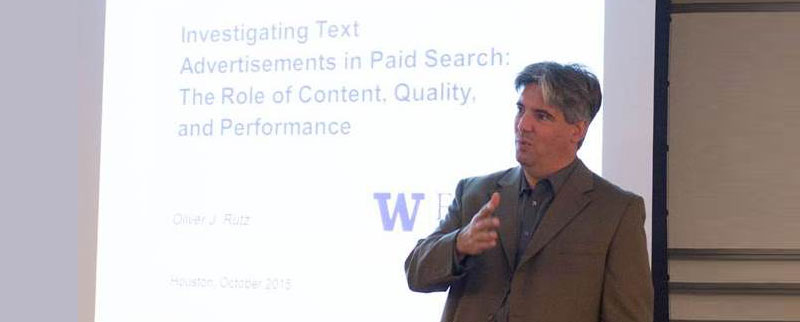
|
10/9/2015
365A MH
10:30-12:00
|
Liye Ma
Maryland
|
"Only the Interested Learn" – A Model of Proactive Learning of Product Reviews
-
Click to read Abstract
We develop a sequential learning model to analyze how consumers proactively acquire product quality information through reading online product reviews. While a rich literature exists on the effect of Internet word-of-mouth, product reviews are often treated as exogenous quality signals in these studies. Review reading, however, is a costly activity that is undertaken in a deliberate manner. Our model casts this information acquisition process in a rational framework. In our model, whether a consumer reads additional reviews, and of which products, depend on both the consumer’s current information set and her future expectations. We apply our model to a rich dataset of online product reviews, which contains consumer browsing and purchase information. We find strong evidence of consumers rationally seeking product review information to refine their quality understanding. Parameter estimates reveal distinct types of information acquisition behaviors. Comparison with alternative models also shows that taking product reviews as exogenous quality signals leads to biased estimates on both quality levels and signal precisions. Counterfactual analysis further shows that the product reviews a consumer sees earlier is more consequential due partly to their impact on subsequent search actions, and that sorting reviews from lowest to highest ratings leads to higher differentiation across products of different qualities than do other sorting criteria. Our study is the first to analyze consumer’s review reading process and to analyze the effect of reviews in this dynamic and endogenous context.
|
|
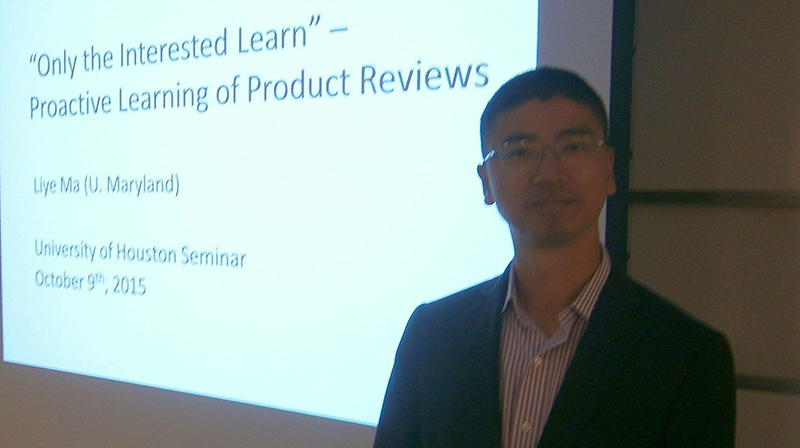
|
9/25/2015
365A MH
10:30-12:00
|
K Sudhir
Yale
|
Spatiotemporal Search
-
Click to read Abstract
Despite evidence that consumers search across both stores (spatial) and time (temporal), the search literature models search in only one dimension. We develop a model of spatiotemporal search that nests a finite horizon model of spatial search within an infinite horizon model of inter temporal search. The model is estimated using an iterative procedure that formulates it as a mathematical program with equilibrium constraints (MPEC) embedded within an E-M algorithm to allow for latent class heterogeneity. The empirical analysis is based on data on household store visits and purchases in the milk category. In contrast to extant research, we find that omitting the temporal dimension underestimates price elasticity. We attribute this difference to the importance of stockouts relative to stockpiling in the milk category. Further, contrary to the conventional wisdom that promotions reduce loyalty, we find that in the presence of search frictions, price promotions can be a store loyalty-enhancing tool.
|
|
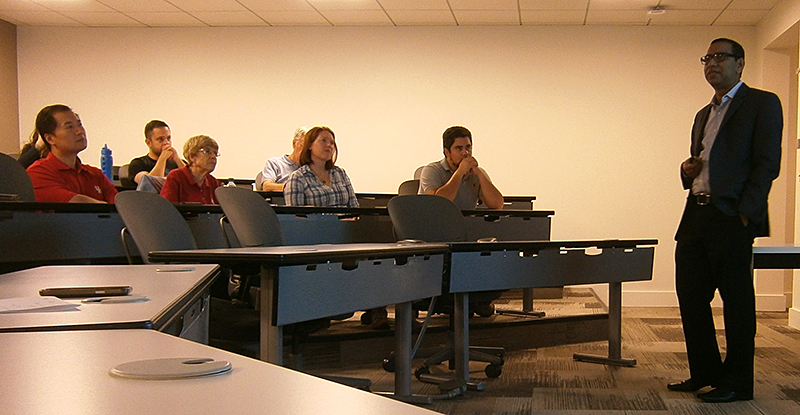
|
3/27/2015
10:30-12:00
|
Dinah Vernik
Rice
|
Competing with Co-Created Products
-
Click to read Abstract
The practice of firms co-creating products and services with their customers has a long history in business markets and, with advances in information technology, is now gaining increasing popularity in consumer markets as well. In this research we study the incentives of competing firms to co-create. We analyze the strategic choices of two competing downstream user firms who simultaneously decide whether or not to co-create with an upstream supplier. Within this framework we incorporate, (1) endogenous pricing and effort choice by the upstream supplier and (2) endogenous pricing and effort choices by the downstream users. User firms contemplating co-creation with a supplier are faced with a trade-off. On the one hand they can benefit from the supplier''''''''s innovation efforts and therefore obtain a better product than they themselves could produce. On the other hand, they are confronted with the adverse effect of their own innovation efforts spilling over to their rivals via the supplier who would sell the co-created products to all user firms. Our model captures this tension and offers several insights. First, we show that, when users compete in the end consumer market, the supplier can exert lower innovation effort when it co-creates with more users. This result complements the existing literature which shows that without competition between users a supplier exerts more effort when it co-creates with more users. Second, we demonstrate that in the co-creation environment, ex-ante symmetric firms may pursue asymmetric strategies in equilibrium. The asymmetric equilibrium, in which only of the two users co-creates with the supplier, is obtained when the degree of competition between the users is large. Further, we find that for moderate degree of competition both users prefer co-creation, yet the supplier may be better off refusing to co-create with one of them thereby enforcing the asymmetric outcome. Finally, counterintuitively, a higher degree of spillover can actually benefit the co-creating firm in the asymmetric outcome, even though it improves its rival's product.
|
|
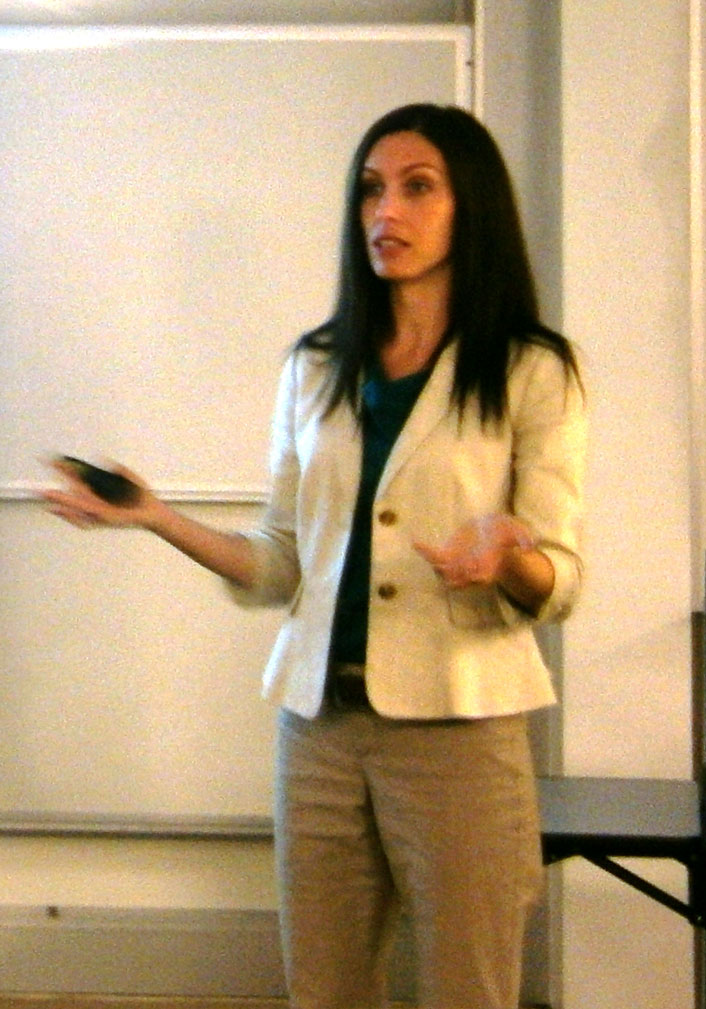
|
3/6/2015
10:30-12:00
|
Dmitri Kuksov
UT Dallas
|
Signaling Low Margins through Assortment
-
Click to read Abstract
Oftentimes, close competitors carry partially overlapping assortments in seeming contradiction to the principle of maximum differentiation. One of the justifications of such practice is that an overlapping assortment with competitive prices on the common products may prevent further consumer search and therefore could be useful even when profits from the overlapping products do not justify the costs of carrying them. In this paper, we examine the validity of this intuition and show that such strategy may indeed be optimal when consumers are uncertain about prices they might find elsewhere and have search costs for discovery of all prices. Specifically, we show that the (larger) assortment with product overlap may signal a “competitive” price of the relatively unique product and prevent further consumer search for a lower price on it. An implication of this finding is that a consumer may rationally behave as if she likes a larger assortment even if the assortment is enlarged by adding products the consumer has no interest in. Furthermore, we show that the optimal pricing strategy may include loss-leader pricing of the common products or products with known costs.
|
|
3/2/2015
10:30-12:00
|
Kitty Wang
CUHK
|
Can Offline Stores Drive Online Sales?
-
Click to read Abstract
The academic literature consistently finds that online and offline channels are substitutes however, practitioners often emphasize "synergies" between online and offline. In this paper, we use evidence from store openings by a bricks-and-clicks retailer to attempt to reconcile these perspectives. Overall, we find no strong evidence of substitution or of synergies. However, splitting locations by whether the retailer has a strong presence prior to the store opening suggests the coexistence of substitution across channels and complementarity in demand. In particular, in places where the retailer has a strong presence, the opening of an offline store is associated with a decrease in online sales and search. In contrast, in places where the retailer does not have a strong presence, the opening of an offline store is associated with an increase in online sales and search. We provide evidence suggesting that this is driven by a marketing communications role for the offline channel through enhancing brand awareness: We see a large increase in new customers and we see little difference between fit-and-feel products and other products.
|
|
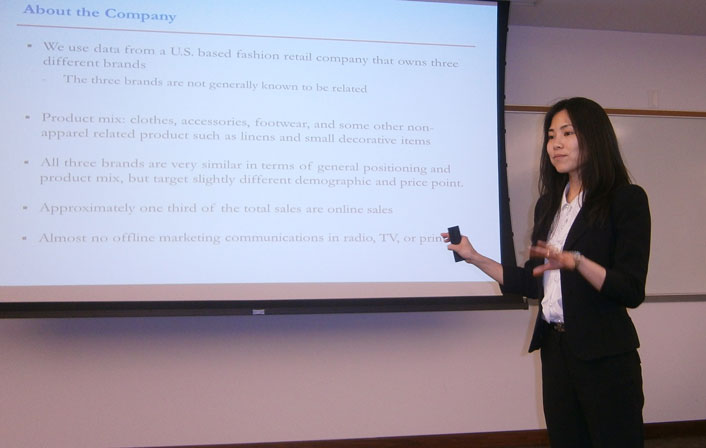
|
2/27/2015
10:30-12:00
|
Song Yao
Kellogg
|
Channel Search and Welfare Implications of Commercial Breaks
-
Click to read Abstract
This paper investigates the implication of breaks that interrupt product consumption on consumer welfare. Such breaks have lower utility levels than the consumption utility. Examples of these breaks include the gaps between sequels of video games, updates of smartphone apps, and commercial breaks during television or radio shows. In the case of TV commercial breaks, for example, conventional wisdom dictates that consumers prefer watching TV shows without the disruption of commercial breaks. However, we argue that breaks may improve the welfare of consumers under certain conditions. In particular, when there is so much uncertainty that the consumer is unclear about the exact utility levels of different products, she has to engage in a costly search to resolve the uncertainty before choosing a product. In the context of TV programming, breaks lower the opportunity cost of search, allowing the consumer to sample alternative channels without further interrupting the viewing experience on her current channel. Using data from the Chinese TV market, we estimate a sequential search model to evaluate our conjecture. The data contain a natural experiment: the Chinese government banned all in-show commercial breaks for episode-based TV series on January 1, 2012. This new policy on commercial breaks created exogenous variations in the data that allow us to separately identify heterogenous consumer preference and search cost. Based on the analyses, we have found evidence that the intended improvement in TV viewing experience was limited. Many consumers were worse off due to the ban on commercial breaks, because they could no longer sample alternative channels that were preferable to their current product choices. We also investigate how the timing of breaks affect TV channels’ viewerships, which offers managerial insights about how firms should adjust the timing of breaks so as to improve their sales.
|
|
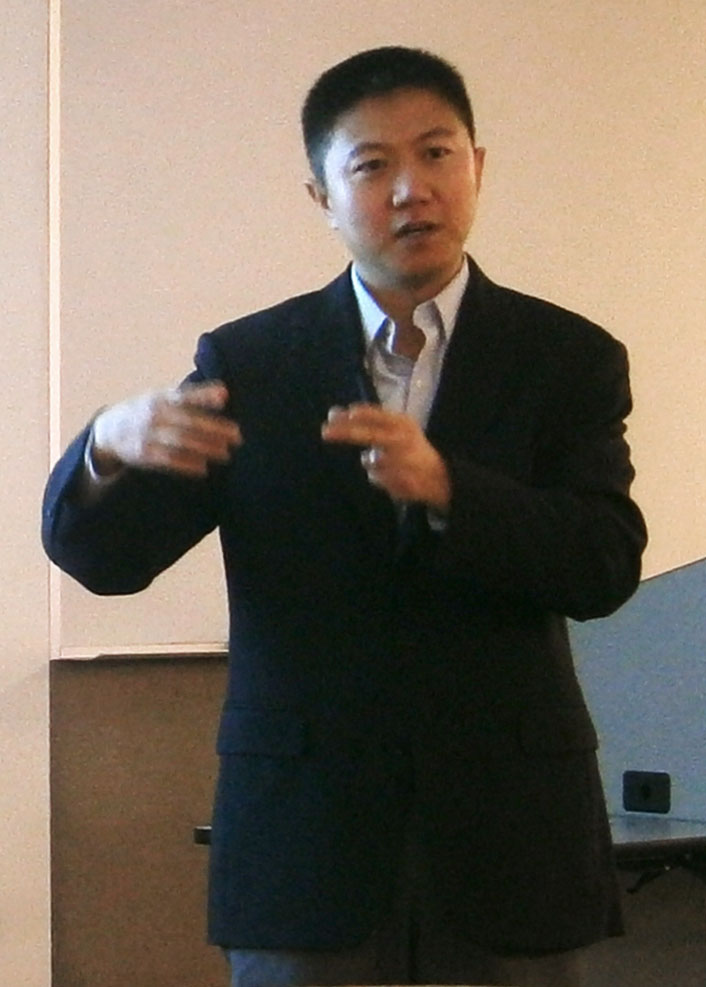
|
2/20/2015
10:30-12:00
|
Yi Qian
UBC
|
"Intellectual Property Rights and Access to Innovation"
-
Click to read Abstract
We examine the effect of pharmaceutical patent protection on the speed of drug launch, price, and quantity in 60 countries from 2000-2013. The World Trade Organization required its member countries to implement a minimum level of patent protection within a specified time period as part of the TRIPS Agreement. However, members retained the right to impose price controls and to issue compulsory licenses under certain conditions. These countervailing policies were intended to reduce the potential static losses that result from reduced competition during the patent term. Using detailed patent data at both the product and country levels, we exploit the fact that selection into "treatment" with a post-TRIPS patent is exogenously determined by compliance deadlines that vary across countries. Patents have important consequences for access to new drugs: in the absence of a patent, launch is unlikely. That is, even when no patent barrier exists, generic entry may not occur. Conditional on launch, patented drugs have higher prices but higher sales as well. The price premium associated with patents is smaller in poorer countries. Price discrimination across countries has increased for drugs patented post-TRIPS and prices are negatively related to the burden of disease, suggesting that countervailing policies to offset expected price increases may have had the intended effects.
|
|
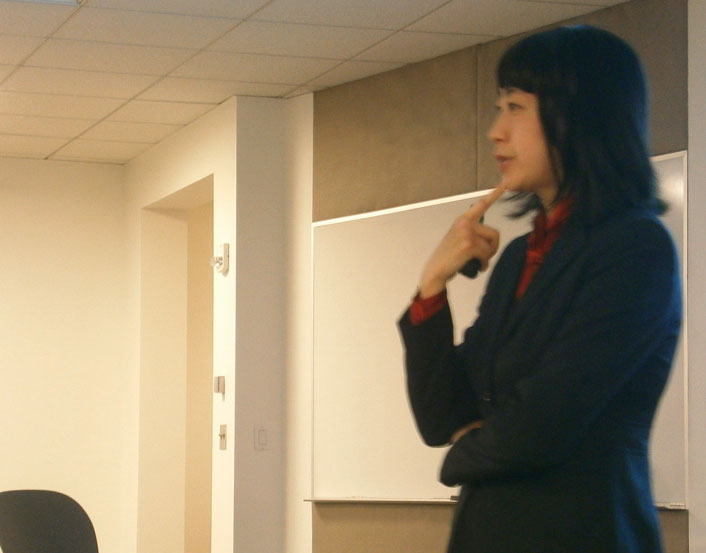
|
2/13/2015
10:30-12:00
|
Aner Sela
Florida
|
"On Metacognition and Culture"
-
Click to read Abstract
Metacognition impacts judgment and decision making, but might its effects vary by culture? Culture shapes the meaning people extract from experiences, and as a result, we suggest it may impact the inferences people draw from metacognitive perceptions. Specifically, whereas cultures with a disjoint agency model (e.g., European-American) see choice as diagnostic of the inner self, cultures with a conjoint agency model (e.g., South-East Asian) see choice more as reflecting external considerations. Consequently, conjoint agency contexts are less likely to use metacognitive experiences that accompany choice as an input to judgments about inner preferences and priorities. Accordingly, we show that Americans – but not Indians – interpreted metacognitive perceptions of choice difficulty, thoughtfulness, and decision-effort as an indication of inner states such as preference certainty and decision importance. Further, priming participants with agency models from the other culture reversed these effects. These findings further understanding of metacognition, culture, and the meaning of choice.
|
|
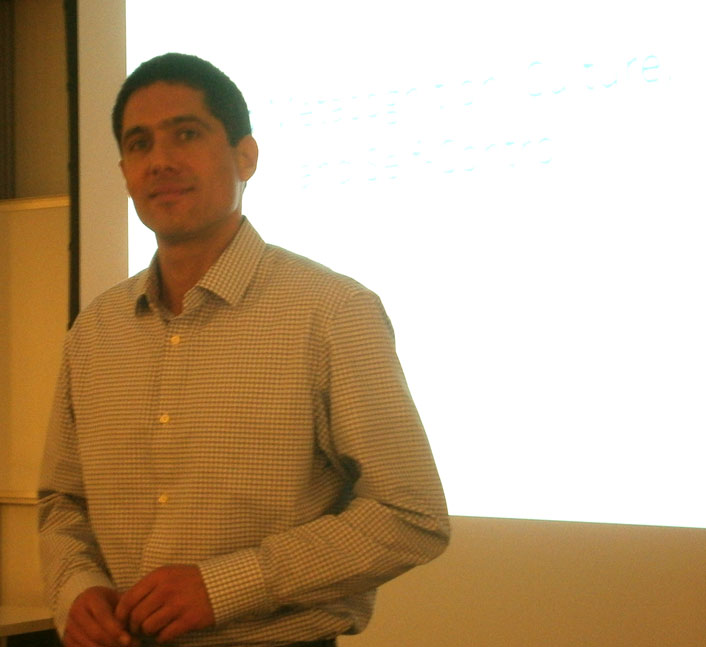
|
1/23/2015
10:30-12:00
|
Adam Duhachek
Indiana
|
"Success Contagion: The Transfer of Achievement to Product Evaluation and Consumer Motivation "
-
Click to read Abstract
Past research has shown that product contagion exists when individuals touch a product and believe properties of the individual transfer to the product, which can then be transferred to another individual. Previously documented forms of contagion involve the transfer of affect from the source to the product, as in instances where a sweater touched by an attractive individual is subsequently evaluated more favorably by a member of the opposite gender. In this article, we hypothesize how skills and abilities can also be made contagious via a process termed ³success contagion.² We hypothesize that goal-related products (such as a bicycle for someone trying to lose weight) are evaluated more favorably when touched or owned by someone who has successfully achieved the same goal. We show this effect occurs only when a relevant goal is activated. Additionally, we show that the use of such products leads to improved performance on goal related tasks via an enhanced motivation mechanism. The implications of these findings for relevant literatures are discussed.
|
|
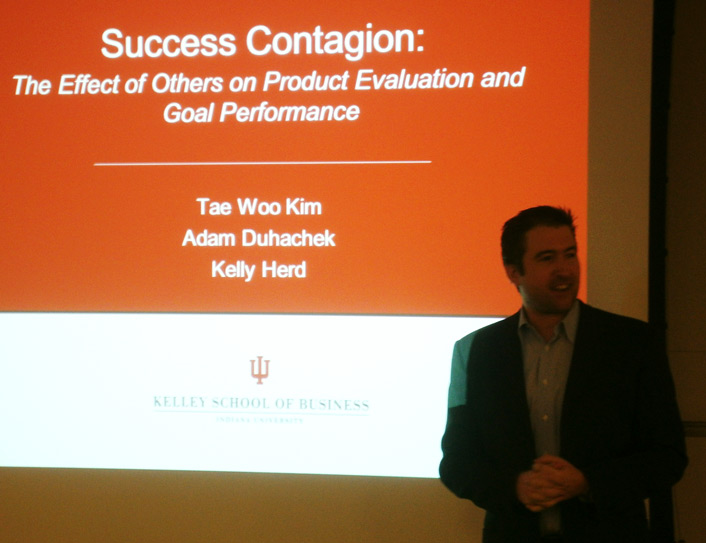
|